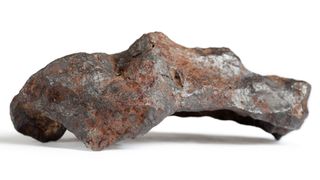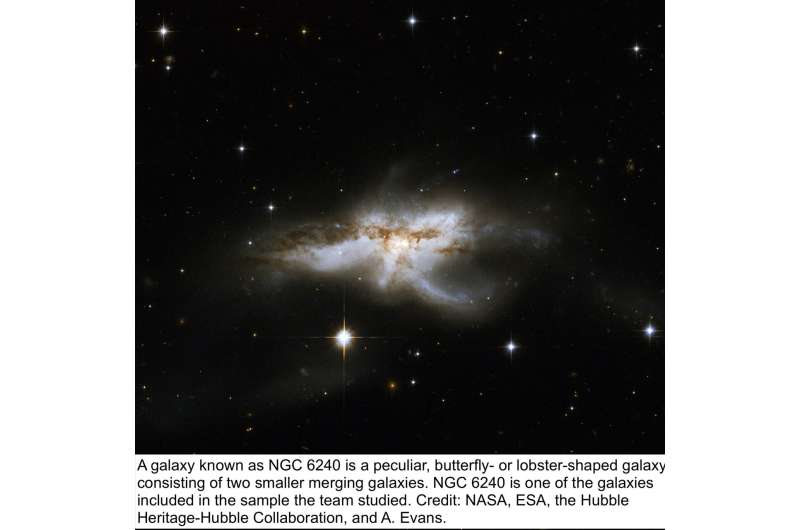The lopsided bipartisan vote reflected a rare consensus in the otherwise polarized Congress in favor of investing federal resources into a broad industrial policy to counter China.

By Catie Edmondson
July 27, 2022
WASHINGTON — The Senate on Wednesday passed an expansive $280 billion bill aimed at building up America’s manufacturing and technological edge to counter China, embracing in an overwhelming bipartisan vote the most significant government intervention in industrial policy in decades.
The legislation reflected a remarkable and rare consensus in an otherwise polarized Congress in favor of forging a long-term strategy to address the nation’s intensifying geopolitical rivalry with Beijing, centered around investing federal money into cutting-edge technologies and innovations to bolster the nation’s industrial, technological and military strength.
It passed on a lopsided bipartisan vote of 64 to 33, with 17 Republicans voting in support. The margin illustrated how commercial and military competition with Beijing — as well as the promise of thousands of new American jobs — has dramatically shifted longstanding party orthodoxies, generating agreement among Republicans who once had eschewed government intervention in the markets and Democrats who had resisted showering big companies with federal largess.
“No country’s government — even a strong country like ours — can afford to sit on the sidelines,” Senator Chuck Schumer, Democrat of New York and the majority leader who helped to spearhead the measure, said in an interview. “I think it’s a sea change that will stay.”
The legislation will next be considered by the House, where it is expected to pass with some Republican support. President Biden, who has backed the package for more than a year, could sign it into law as early as this week.
The bill, a convergence of economic and national security policy, would provide $52 billion in subsidies and additional tax credits to companies that manufacture chips in the United States. It also would add $200 billion in scientific research, especially into artificial intelligence, robotics, quantum computing and a range of other technologies.

Its passage was the culmination of a years long effort that, in Mr. Schumer’s telling, began in the Senate gym in 2019, when he approached Senator Todd Young, Republican of Indiana, with the idea. Mr. Young, a fellow China hawk, had previously collaborated with Democrats on foreign policy.
In the end, it was made possible only by an unlikely collision of factors: a pandemic that laid bare the costs of a global semiconductor shortage, heavy lobbying from the chip industry, Mr. Young’s persistence in urging his colleagues to break with party orthodoxy and support the bill, and Mr. Schumer’s ascension to the top job in the Senate.
Many senators, including Republicans, saw the legislation as a critical step to strengthen America’s semiconductor manufacturing abilities at a time when the nation has become perilously reliant on foreign countries — especially an increasingly vulnerable Taiwan — for advanced chips.
Read More on the Relations Between Asia and the U.S.Trade Policy: The new trade deal announced by President Biden during a trip to Asia is based on two big ideas: containing China and moving away from a focus on markets and tariffs.Taiwan: The Biden administration has grown increasingly anxious that China might try to move against this self-governing island over the next year and a half — perhaps by trying to close off the Taiwan Strait.China: At a Group of 20 meeting in Indonesia, Secretary of State Antony J. Blinken sought to cool tensions with Beijing in an effort to further isolate Russia. He met resistance.South Pacific: As Beijing seeks a sweeping regional deal with Pacific Island nations, the United States is left playing catch-up in an increasingly vital arena of its global competition with China.
A phalanx of former President Donald J. Trump’s national security advisers, from H.R. McMaster to Mike Pompeo, came out in support for the legislation, helping Republican lawmakers make the argument that voting for the bill would be a sufficiently hawkish move.
Mr. Schumer said it had been not too difficult to rally votes from Democrats, who tend to be less averse to government spending. “But to their credit, 17 Republicans, including McConnell, came in and said, ‘This is one expenditure we should make.’”
The legislation, which was known in Washington by an ever-changing carousel of lofty-sounding names, has defied easy definition. At more than 1,000 pages long, it is at once a research and development bill, a near-term and long-term jobs bill, a manufacturing bill and a semiconductors bill.
Its initial version, written by Mr. Schumer and Mr. Young, was known as the Endless Frontier Act, a reference to the 1945 landmark report commissioned by President Franklin D. Roosevelt asking how the federal government could promote scientific progress and manpower.
“New frontiers of the mind are before us, and if they are pioneered with the same vision, boldness, and drive with which we have waged this war,” Mr. Roosevelt wrote at the time, “we can create a fuller and more fruitful employment and a fuller and more fruitful life.”
Enactment of the legislation is considered a critical step to strengthening America’s semiconductor abilities at a time when the share of modern manufacturing capacity in the United States has plummeted to 12 percent. That has left the nation increasingly reliant on foreign countries amid a chip shortage that has sent shock waves through the global supply chain.
The subsidies for chip companies were expected to immediately produce tens of thousands of jobs, with manufacturers pledging to build new factories or expand existing plants in Ohio, Texas, Arizona, Idaho and New York.
The bill also seeks to create research and development and manufacturing jobs in the long run, with provisions aimed at building up pipelines of workers — through work-force development grants and other programs — concentrated in once-booming industrial hubs hollowed out by corporate offshoring.
In an interview, Mr. Young described the legislation as an effort to equip American workers hurt by globalization with jobs in cutting-edge fields that would also help reduce the nation’s dependence on China.
“These technologies are key to our national security,” Mr. Young said. “We’re actually giving rank-and-file Americans an opportunity, as it relates to chip manufacturing, for example, to play a meaningful role, not only in supporting their families, but also harnessing our creativity, talents, and hard work, to win the 21st century.”
The bill is expected to pave the way for the construction of factories across the country and, along with that, an estimated tens of thousands of jobs.
Image

Chip manufacturers lobbied heavily, and often shamelessly, for the subsidies, in recent months vocally threatening to plunge their resources into building plants in foreign countries like Germany or Singapore if Congress didn’t quickly agree to shower them with federal money to stay in the United States.
Most senators, especially those representing states eyed by chip companies, saw those efforts as reason to quickly pass the legislation. But they particularly infuriated Senator Bernie Sanders, independent of Vermont, who bluntly and frequently accused the prosperous executives of such companies of shaking down Congress.
“In order to make more profits, these companies took government money and used it to ship good-paying jobs abroad,” Mr. Sanders said. “Now, as a reward for that bad behavior, these same companies are in line to receive a massive taxpayer handout to undo the damage that they did.”
Several times in the bill’s life span, it appeared doomed to either collapse or be drastically slimmed down, with the long-term strategic policy provisions whittled off and only the most commercially and politically urgent measure, the $52 billion in subsidies for chip companies, remaining.
The bill appeared imperiled late last month after Senator Mitch McConnell, Republican of Kentucky and the minority leader, announced that he would not let it proceed if Senate Democrats continued to advance their social policy and tax plan, the centerpiece of Mr. Biden’s domestic agenda.
In a private conversation, Mr. Young asked Mr. McConnell to reconsider.
Mr. McConnell “saw the near-term value proposition, and frankly, the criticality of getting the chips legislation funded,” Mr. Young recalled.
Still, with Mr. McConnell’s position uncertain and other Republicans refusing to commit to supporting the measure, Mr. Schumer moved last week to force a quick vote on the semiconductor subsidies, leaving open the possibility that the broader bill would be sidelined.
That sparked a last-minute effort by Mr. Young to secure the support of enough Republicans — at least 15, Mr. Schumer had told him — to restore the critical investments in manufacturing and technology. For days, Mr. Young and his allies worked the phones to try to win over Republicans, emphasizing the national security importance of the bill and the opportunities it could bring to their states.
Ahead of the final passage vote at a private party lunch on Tuesday, Mr. Schumer gave his members a pitch of his own.
“This bill is going to have one of the greatest and most far-reaching effects on America that we’ve ever done,” Mr. Schumer said he told Democratic senators. “A lot of your grandchildren will be in good-paying jobs because of the vote you’re taking.”




